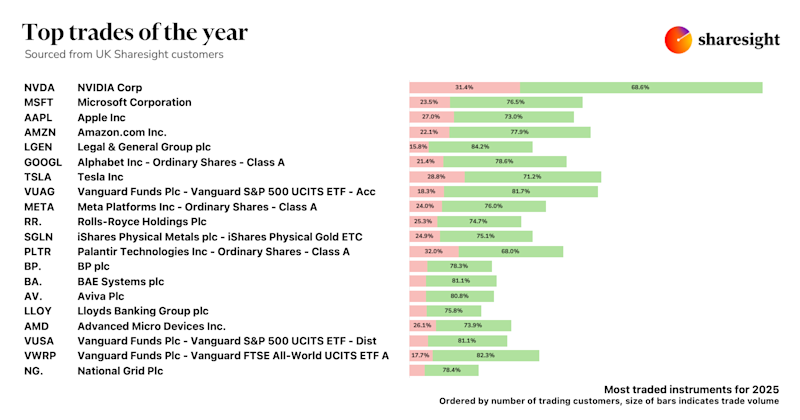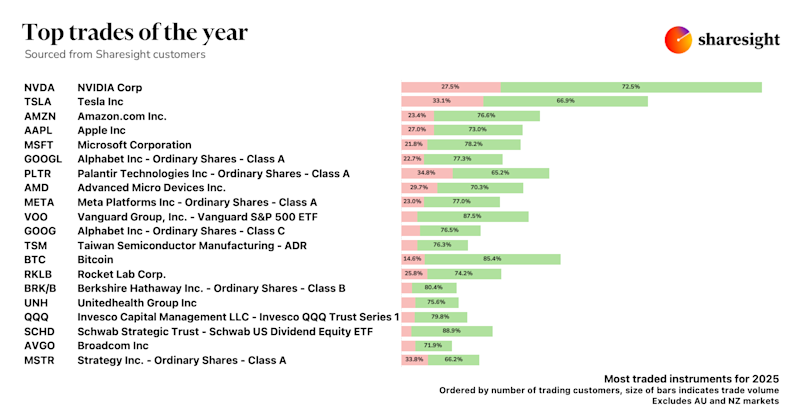How to track employee stock plans
If you own company shares as part of a bonus plan, also referred to as an employee stock plan (ESP) or employee share scheme (ESS), it’s important to understand how it works and how to track the performance of these shares. In particular, you need to know what your shares are worth, because by the time you cash out they may have lost value.

This blog post will explain how stock vesting works, along with the basics behind the most common types of employee stock plans, plus why it’s important to track the performance of your employee shares and how you can do this with Sharesight.
What is stock vesting?
Vesting is the time lag between when you’re awarded the shares and when you can act on them. This is basically a way for the company to mitigate short-term behaviour and keep you around. Vesting usually takes place on a quarterly or annual schedule with portions of the bonus shares being released to you in equal allotments called tranches.
This gets tricky if you’re awarded stock bonuses in consecutive years. For example, if you received 35 stock options or the RSU cash equivalent (see the section below) in three straight years, with the tranches vesting in three equal allotments on a yearly basis this means you’d have nine chunks of stock to track:
| 2021 | 2022 | 2023 | 2024 | 2025 | |
| 2021 bonus 35 shares | Tranche 1 (11 shares) | Tranche 2 (12 shares) | Tranche 3 (12 shares) | ||
| 2022 bonus 35 shares | Tranche 1 (11 shares) | Tranche 2 (12 shares) | Tranche 3 (12 shares) | ||
| 2023 bonus 35 shares | Tranche 1 (11 shares) | Tranche 2 (12 shares) | Tranche 3 (12 shares) |
In this example, 2023 is a busy year. You’d have three chunks of stock vesting at three different prices. The unequal amounts are due to 35 not being divisible by three in whole share terms.
What are Restricted Stock Units (RSUs)?
RSUs are the simplest and most common type of employee stock plan. An RSU is basically a cash bonus that is automatically converted into shares. It is pinned to the historical grant price and released to you over time via the vesting process mentioned above. When the RSUs vest, you’re taxed as if this was normal income. Many employers withhold this automatically, particularly in the US, although in countries where employee shares are not as widespread this is less common.
From a tax perspective, the vesting date and the sell date are the ones to keep an eye on. To avoid short-term capital gains tax, you’ll need to hold onto your shares after they vest for longer than a year (depending on your tax residency). Also, if your company pays dividends, you’ll begin receiving them after vesting and need to factor these into your taxable income.
How do stock options work?
Stock option plans are out of fashion because they’re a nightmare to administer and create tax problems for the recipient, but you may still be a participant. Stock options are shares given to an employee at a specific exercise price. They are also generally a lot more volatile than ordinary shares.
For example, Morningstar gave me 35 stock options at $18.50 in 2005. This meant I had an option to exercise my 35 shares at $18.50 anytime after the vesting date. In my case, all 35 options had vested by 2009 and I exercised and sold them in 2012.
It’s commonly misunderstood that exercising is the same as selling. Exercising an option means you buy them at the agreed price and convert them into shares. You can then choose to hold or sell them.
From a tax perspective, the clock usually starts running on the exercise date. You may also be liable to pay income tax on unrealised gains on the shares after exercising them as is the case in the US.
Options usually expire after 10 years as well, meaning you forfeit your right to exercise them if you don’t do it before the expiry date. This translates to $0. You can see how this can become an expensive and complicated process before you receive any cash, and why it’s fallen out of favour!
Why you should track your stock plan with Sharesight
Tracking your employee stock plan is crucial to make the most out of your shares. Unfortunately, people often make the following mistakes:
-
Assuming company stock is the same thing as a free cash bonus.
-
Assuming the value of the shares will only go up.
They are not free shares – you’re buying the stock with your bonus. Assuming that you’ve bought the shares is the first step towards acting like a proper investor, and this means keeping track of your returns (which may not always be increasing).
Adding a stock plan to your Sharesight portfolio
The first step to tracking your shares is confirming how many shares you own, which are vested or unvested, and what the grant or exercise price is. Employee share plans are often administered by share registries or back office companies, so visiting the relevant website should give you the information you need.
Next, if you’re not already using Sharesight you can sign up for a free account.
Once you have a Sharesight account, simply enter your company shares as buy trades in your portfolio. All you need is the number of units, price, date, and you’re done.
For example, here’s how my 35 Morningstar shares would look in a Sharesight portfolio, benchmarked against the S&P 500:
An example of stock options from a US company in a non-US portfolio, benchmarked against one of more than 170,000 instruments Sharesight supports.
To make things easy, I would recommend using one portfolio for your vested shares and another for unvested shares. Then when your unvested shares vest, you would simply sell them out of your unvested portfolio and buy them in your vested portfolio (at the same price and quantity). Alternatively, you could use Sharesight’s Custom Groups feature to tag vested and unvested shares and keep them in the same portfolio.
Tracking the performance of your employee stock plan
Keeping track of your vested shares is important because they will generally be reportable as income in the year you "buy" them. You can retrieve this data by running Sharesight’s All Trades Report. Your company will also produce a report for the tax authorities that details the taxable amount you have received, which should equal the sum of your buy trades in most cases.
The performance of your unvested shares is also worth keeping an eye on, especially as the vesting date approaches. You have used your bonus to buy these shares, so it’s useful to know how they are performing relative to other investments you could have made with your bonus.
It’s easy to evaluate the performance of your company shares with Sharesight, as it shows you your annualised performance, including the impact of capital gains and losses, dividends and currency fluctuations. You can also benchmark your shares against over 170,000 different stocks, ETFs and mutual/managed funds that Sharesight supports. This becomes especially relevant once your shares have vested and you have the option to sell and re-invest elsewhere if they aren’t performing well. And should you decide to sell your shares, you can simply share your portfolio with your accountant at tax time.
Need more information?
For more information on how to track employee stock plans with Sharesight, see our instructional video here: Embedded content: https://www.youtube.com/watch?v=uGgWez28qnU
Track your employee stock plan with Sharesight
Need to track an employee stock plan? Sign up for Sharesight so you can:
-
Track all of your investments in one place, including stocks, mutual funds, property and even cryptocurrency
-
Automatically track your dividend and distribution income from stocks, ETFs and mutual funds
-
Run powerful reports built for investors, such as Performance, Portfolio Diversity, Contribution Analysis and Future Income (upcoming dividends)
-
Easily share access of your portfolio with family members, your accountant or other financial professionals so they can see the same picture of your investments as you do
Disclaimer: Sharesight does not provide tax advice. The taxation of employee shares can be complex and varies by country. Please check with your accountant or financial advisor for tax advice specific to your situation before acting on any of the information in this article.
FURTHER READING

Sharesight users' top trades – December 2025
Welcome to the December 2025 edition of Sharesight’s monthly trading snapshot, where we look at the top buy and sell trades by Sharesight users over the month.

Top trades by UK Sharesight users in 2025
Welcome to the 2025 edition of our UK trading snapshot, where dive into this year’s top trades by the Sharesight userbase.

Top trades by global Sharesight users in 2025
Welcome to the 2025 edition of our global trading snapshot, where we dive into this year’s top trades by Sharesight users around the world.